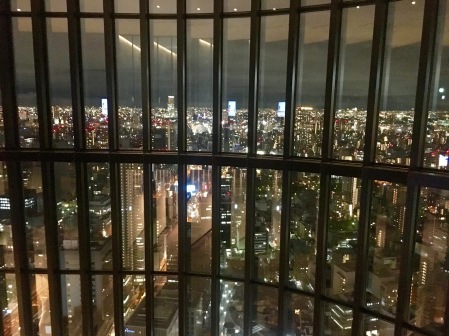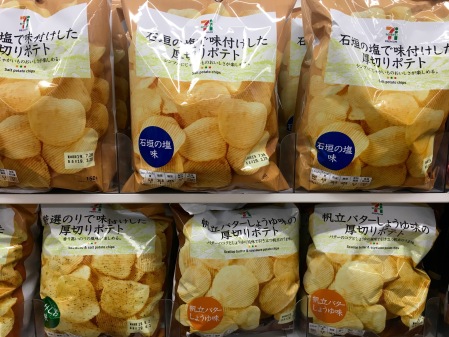
We visited a small island called Yoron essentially in Okinawa (but which is actually just over in the neighbouring Kagoshima prefecture) a couple of years ago when we lived in Japan (you can read about that trip here, here, and here) and loved the sun and amazing, pretty much tourist-free beaches there and thought that now that we are on holiday in Japan, we should visit the Okinawan islands again.
So here we are in Zumami Island, about 1 hour from the Okinawan main island by catamaran. At least partly due to the ease of access, Zumami it is one of the most popular Okinawan islands for tourists – having said that, there is hardly anyone here! See the photo below of the busiest day on the beach that has been voted the best in Japan. In fact, I’m not sure who voted given that there are more people at any given beach in England in torrential rain than on the beaches of Zumami in warm April weather.

When we told our Japanese friends in Osaka (some of whom are from Okinawa) that we were going to Zumami for 5 days, they all were a bit surprised and said that 5 days was a long holiday for Zumami as there was practically nothing on the island to do – and they were right. The island is tiny, there is one ‘supermarket’ (a small shop really), a couple of local restaurants that are open between noon and 2pm for lunch and apparently 1 policeman (whom you can call by using one phone in the village centre). In fact, to illustrate how small it is, my husband set himself a challenge to run every bit of road whilst we were there – which he did!

A two-table strong eatery on the island, serving only Okinawan noodles, pot noodles, crisps, ice cream and beer in a rather rustic environment.
There is not that much to do on the island other than enjoy the amazing beaches (and, like my husband, run up and down the handful of roads if you are that way inclined). But the beaches and the sea at Zumami is pretty amazing! One of the beaches on the island homes turtles (Ama beach) and the other one has a tropical fish filled coral reef (Furuzamami beach), and we’ve spend much of the past days on one or the other, even though my husband struggles with the fact that the nearest beach to our hotel (Furuzamami beach) lacks some pretty essential services for British holiday makers, more specifically, the café on the beach does not serve any alcohol!
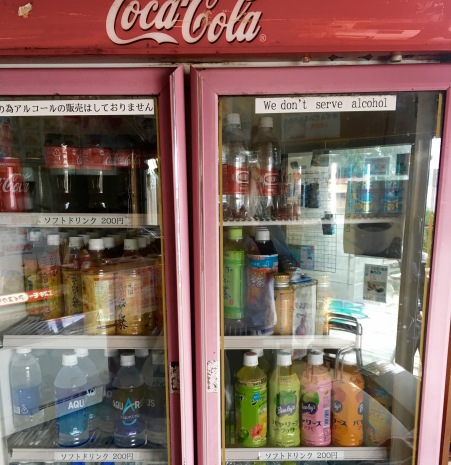
And so, we’ve just spent 5 days on the beach without a single glass of wine – which led to my husband contemplating running to the ‘supermarket’ (2km away) emptying its liquor shelf and bringing some sake and wine for us to sip while resting our eyes on the clear blue sea (but we refrained from doing that when we then noticed the safety warnings telling swimmers not to drink and dive). But after an alcohol-free day on the beach, in the evenings when back at the hotel, we had a little stroll on the beach next to our hotel and had some sake and plum wine there.

One-cup of plum wine on the not-snorkelling-beach.
So we’ve done a fair amount of sober snorkelling for the past days, which has been wonderful.
![FullSizeRender[1]](https://brightoneagle.files.wordpress.com/2019/04/fullsizerender1-2.jpg?w=400&h=490)
The reef starts literally 5 metres from the beach and snorkelling there feels like you are in a fish tank filled with Nemo and Dory from Finding Nemo, puffer fish, angel fish and lots of other types of colourful fish that I don’t recognise and I felt I was smiling every time I dove into the water (regardless of the fact that it was a rather ungraceful entry with flippers which felt like boots that were too big for me). But what wiped the smile off my face pretty quickly and demonstrated that the boots were in fact too big for me (for snorkeling in tropical waters) was a close encounter with a large venomous sea snake! It was about 1 metre from me, but luckily heading from the surface to the reef and was not paying much attention to me. Nevertheless, you’ve never seen me scurry back to the shore as quickly as then. Once on dry land, I went to the lifeguards to tell that I had seen a large specimen of the snake whose photo hung by the beach telling people that if bitten to immediately squeeze the venom out of the bite and to go directly to the hospital, but they seemed rather relaxed about it and said that it would be safe to return to the water. For some reason I felt like snorkelling was done for the day (and we had fun and games outside the water).
![FullSizeRender[2]](https://brightoneagle.files.wordpress.com/2019/04/fullsizerender2-1.jpg?w=451&h=338)
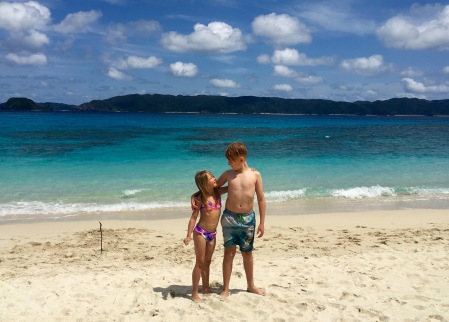
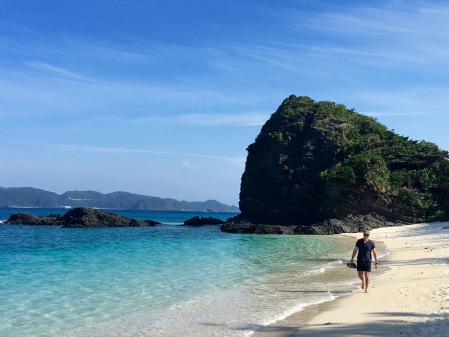

![FullSizeRender[2]](https://brightoneagle.files.wordpress.com/2019/04/fullsizerender2-2.jpg?w=450&h=594)
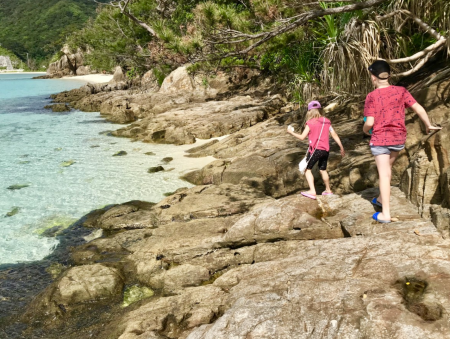

But if you think that you want to visit Zumami island, a word of warning might be in order. The island really is very quiet and the accommodation very basic. You would be disappointed if you arrived there expecting a high-end, state of the art resort and found Kerama beach hotel with its interior and exterior having peaked maybe 30 years ago and instead of all inclusive buffet tables catering for all diets, you’ll get a tray of Japanese food for breakfast and dinner (which we found super delicious but which nevertheless gives little choice for those who are picky eaters).
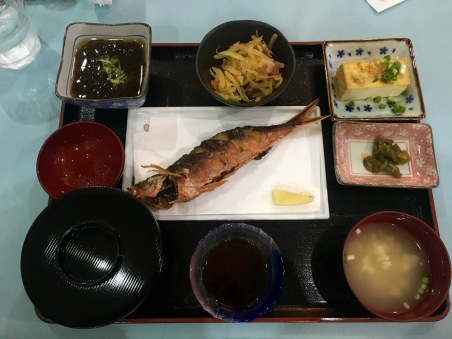
French Riviera style luxurious hotel complexes simply do not exist on this island. But what compensates for the rustic lodgings is the staff’s customer service. In true Japanese style they bent over backwards for us, driving us around the island like a personal taxi service (as there are no taxis on the island and no public transport to speak of), offered us ice and sake glasses when they noticed that my husband had emptied the liquor shelf at the village shop (maybe so that we would return the plastic cups back to our bathroom) and spontaneously made us vegetarian tempura for dinner when they noticed that my husband (who is vegetarian) was eating mine and the children’s rice while we were having his grilled chicken.
But if you are after a relaxing beach holiday in a rustic environment, appreciate that sea snakes live in the reef for the same reason you want to swim there (i.e. for the fish) and can cope with the lack of access to alcohol on the beach, Zamami island should be on your bucket list!

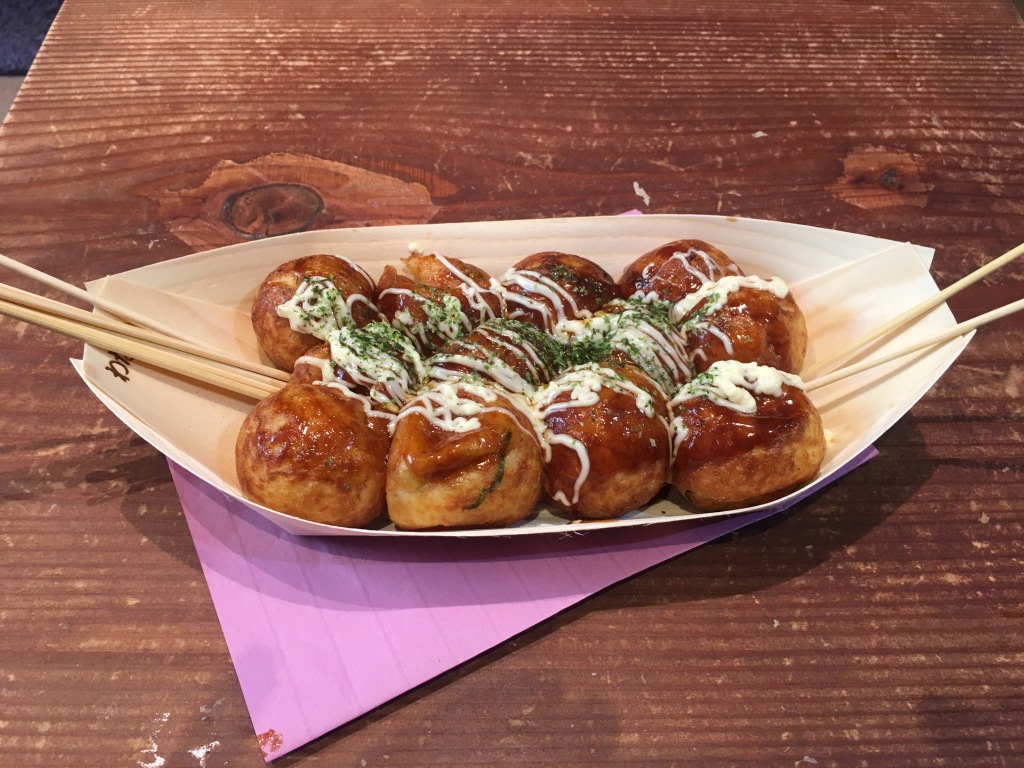

![FullSizeRender[1]](https://brightoneagle.files.wordpress.com/2019/04/fullsizerender1-4.jpg?w=451&h=338)
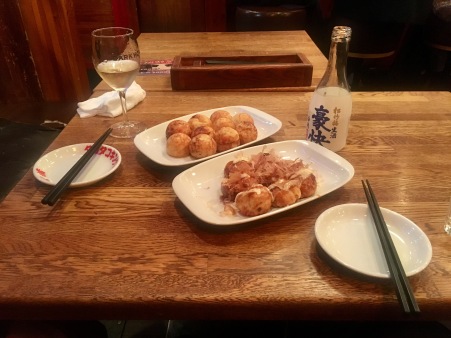







![FullSizeRender[1]](https://brightoneagle.files.wordpress.com/2019/04/fullsizerender1-2.jpg?w=400&h=490)
![FullSizeRender[2]](https://brightoneagle.files.wordpress.com/2019/04/fullsizerender2-1.jpg?w=451&h=338)



![FullSizeRender[2]](https://brightoneagle.files.wordpress.com/2019/04/fullsizerender2-2.jpg?w=450&h=594)




